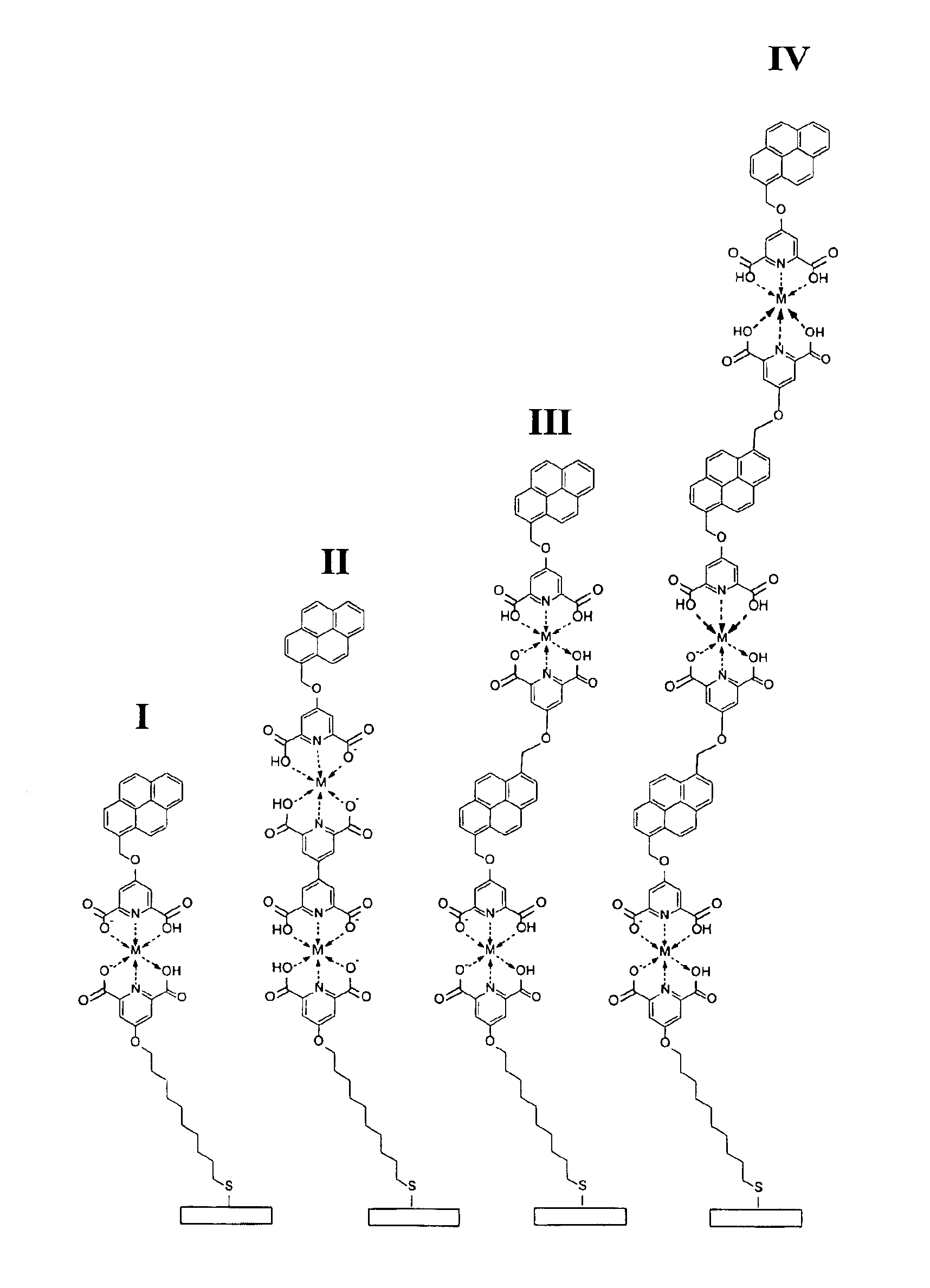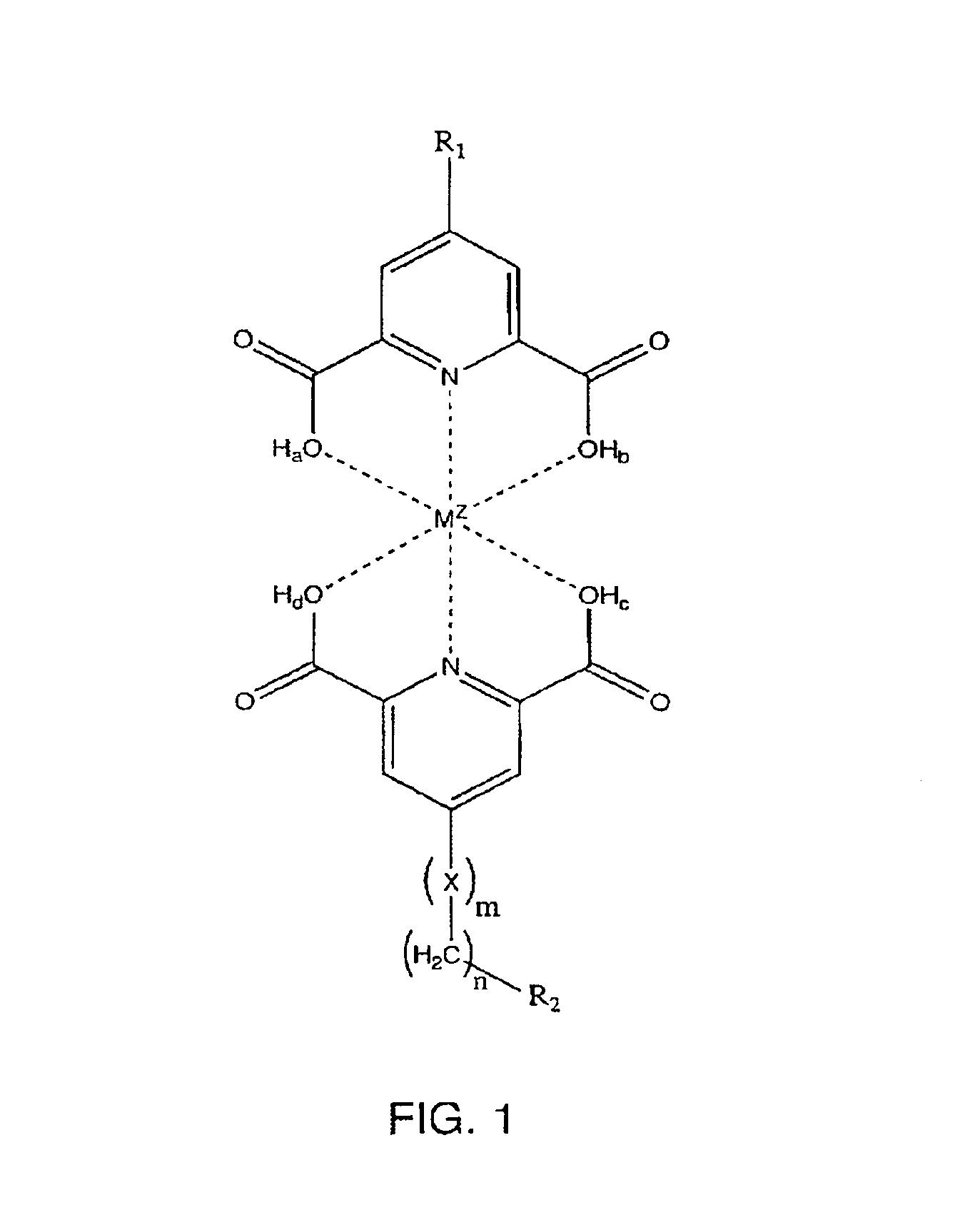Non-covalent assembly of multilayer thin film supramolecular structures
a supramolecular structure and multi-layer technology, applied in nanoinformatics, instruments, record information storage, etc., can solve the problems of unrealized goals, unsustainable multi-functional molecules, and high synthetic effort involved in producing such multi-functional molecules, so as to reduce synthetic complications and achieve significant photocurrent
- Summary
- Abstract
- Description
- Claims
- Application Information
AI Technical Summary
Benefits of technology
Problems solved by technology
Method used
Image
Examples
Embodiment Construction
[0020]A key advantage of the present invention over current state of the art for multilayer assembly is the advantageous features of the bis(2,6-pyridinedicarboxylate) metal linker used to join adjacent film layers in structures of the present invention. Current state of the art relies on strategies such as sequential deposition of Langmuir-Blodgett films or SAMs that rely on weak intermolecular interactions between molecules such as van der Waals (VDW) interactions and hydrogen bonding as well as metal-ligand coordination to control deposition and positioning of success layers of components. The inherently weak nature and reversibility of VDW and hydrogen bonding make them unsuitable for linkages with which to control multilayer assembly. Those few systems that utilize stronger metal-ligand interactions to link molecular components suffer from a very limited selection of organic ligands that generally are tailored to be compatible with a specific metal. Ligand systems that are comp...
PUM
| Property | Measurement | Unit |
|---|---|---|
| pH | aaaaa | aaaaa |
| pH | aaaaa | aaaaa |
| temperature | aaaaa | aaaaa |
Abstract
Description
Claims
Application Information
 Login to View More
Login to View More - R&D
- Intellectual Property
- Life Sciences
- Materials
- Tech Scout
- Unparalleled Data Quality
- Higher Quality Content
- 60% Fewer Hallucinations
Browse by: Latest US Patents, China's latest patents, Technical Efficacy Thesaurus, Application Domain, Technology Topic, Popular Technical Reports.
© 2025 PatSnap. All rights reserved.Legal|Privacy policy|Modern Slavery Act Transparency Statement|Sitemap|About US| Contact US: help@patsnap.com



